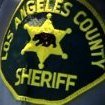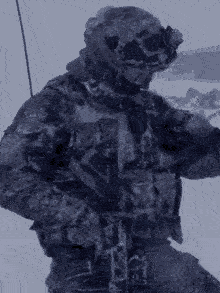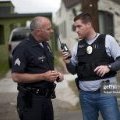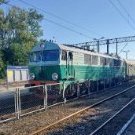-
Postów
133 -
Rejestracja
-
Ostatnia wizyta
-
Wygrane w rankingu
1
Aktywność reputacji
-
KompanWilczur polubił odpowiedź w temacie przez xDolar w Los Santos Police
The Anti-Drug Abuse Act of 1988 granted the Director of the Ofice of National Drug Control Policy (ONDCP) the authority to designate any area in the United States a High Intensity Drug Trafficking Area (HIDTA). The rationale was to create a * mechanism for directing additional assistance to the most important drug trafficking areas in the United States. In 1990, the Director designated the five HIDTAs that are reviewed in this report: New York/New Jersey, Los Angeles, South Florida, Houston, and the Southwest Border. There are now 28 HIDTA regions, covering part or all of 40 states, Puerto Rico, and the U.S. Virgin Islands. The geographic scope of the program has expanded so dramatically that in an interview, one ONDCP official quipped, “We used to keep track of the HIDTA program by listing areas that had HIDTAs; now, we just list areas that don’t have HIDTAs.” The HIDTA program can no longer be seen as directing hnds to specific regions; it is de facto a national program. And the purpose of the program has indeed changed. The mission is now to enhance America’s drug-control efforts by improving coordination among local, state, and Federal law enforcement agencies. The KIDTA program finds a variety of anti-drug initiatives in each HIDTA region. The bulk of these initiatives, both in terms of assigned enforcement personnel and fbnding, involve multi-agency law enforcement task forces designed to investigate drug trafficking organizations, interdict drugs, or attack a particular aspect of drug trafficking, such as money laundering. While many task forces are effective, they are too often assembled indiscriminately. Some task forces in the five sites reviewed were put together to address circumstances where an absence of coordination among enforcement
-
KompanWilczur polubił odpowiedź w temacie przez xDolar w Los Santos Police
NARCOTICS HOTLINE – 800-662-BUST (2878)
Gang and Narcotics Division
The deployment of the Los Santos Police Department (LSPD) Gang and Narcotics Division (GND) is a revolutionary change in law enforcement strategy. The GND is one component of the LSPD Gang Initiatives 2009 “total solution” to combat the gang and drug problem in the City of Los Santos. The consolidation of the Gang Operations Support Division and Narcotics Division into GND fosters greater efficiency and facilitates the rapid deployment of resources to identified crime problems.
Since there is a nexus of guns, gangs, narcotics, and crime, the increased cooperation between experienced gang and narcotics investigators will result in more effective investigations, a quantifiable increase in arrests and a reduction in the crime rate. Joint operations between narcotics and gang detectives, in cooperation with other City entities and resources, will also be developed to abate chronic narcotic and gang locations. The GND will be focused on disrupting violent gangs with allied law enforcement agencies and expand the highly successful High Intensity Drug Trafficking Areas (HIDTA) Task Forces to reduce violent gang crime.
The mission of Gang and Narcotics Division is to disrupt violent street gangs and the means by which they support their lifestyle, including the manufacture, transportation, sale and use of illicit drugs, and sales of firearms in the greater Los Santos area. Gang and Narcotics Division’s enforcement efforts also focus on street-level enforcement strategies to effect a reduction in Part I crimes, thereby resolving community problems and facilitating uniformed officer’s involvement.
Be safe!
-
Xeenik polubił odpowiedź w temacie przez xDolar w [LSPD] Mission Row Gangs Suppression
Program Goals
The U.S. Department of Justice, Office of Juvenile Justice and Delinquency Prevention (OJJDP)–funded Gang Reduction Program (GRP) was a targeted multiyear (2003-08) initiative to reduce crime and violence associated with youth street gangs in a select group of cities throughout the United States. The initiative facilitated collaborations among federal agencies, local stakeholders, and communities to create a comprehensive, integrated, and coordinated program, which included primary prevention, secondary prevention, intervention, and gang suppression strategies. The GRP was designed to address individual needs and risk as well as communitywide issues. For a visual depiction of the GRP Framework, please see Cahill and Hayeslip (2010).
Program Theory
The GRP integrated the Spergel model of gang interventions (also known as the OJJDP Comprehensive Gang Model), parts of Project Safe Neighborhoods, and other OJJDP–funded programs to form a comprehensive approach to gang reduction. According to the Spergel model, gang problems result from the interaction of sociological, demographic, economic, and cultural factors along with social instability and lack of economic opportunity. The model focuses on assessing youth needs and providing them with individualized support services and suppression/control by involving their families, local organizations, and communities (Cahill et al. 2008). Target Population GRP communities were smaller (2 to 5 square miles on average), with strong citizen involvement and substantial gang activity and crime. The final sites were selected at OJJDP’s discretion. The Boyle Heights neighborhood in East Los Santos (LS), San Andreas, was selected for its long history of gang violence. A petition was also filed by the LS Chief of Police and U.S. Attorney’s office with OJJDP for support in addressing the city’s gang violence problem. This area of LS has approximately 2,000 documented and suspected gang members belonging to four major gangs, and is patrolled by the LS Police Department (LSPD) Hollenbeck Division.
Services Provided
Through a partnership with an existing multiagency law enforcement collaborative called the Community Law Enforcement and Recovery Program (CLEAR), the LS GRP’s suppression component coordinated resources for reducing violent gang crime in the target area. CLEAR was federally funded in 1996 under the Anti-Gang Initiative and targeted downtown LS. The program expanded to the Boyle Heights area in 2003 and shared the same boundaries as the LS GRP target area. LSPD gang officers established a presence in the community and participated in Community Impact Team meetings with select target areas citizens. The City Attorney prosecuted misdemeanor offenses, while the District Attorney prosecuted felony cases. Prosecutors were assigned to a case that they then handled from initial filing to final court disposition. Parole and probation officers worked closely with the LSPD to share information on gang members and gang activity through jail intelligence. The CLEAR Operations Team consisted of representatives from each participating agency and met regularly to address gang activity and enforcement.
-
bziuko polubił odpowiedź w temacie przez xDolar w [LSPD] Mission Row Gangs Suppression
Program Goals
The U.S. Department of Justice, Office of Juvenile Justice and Delinquency Prevention (OJJDP)–funded Gang Reduction Program (GRP) was a targeted multiyear (2003-08) initiative to reduce crime and violence associated with youth street gangs in a select group of cities throughout the United States. The initiative facilitated collaborations among federal agencies, local stakeholders, and communities to create a comprehensive, integrated, and coordinated program, which included primary prevention, secondary prevention, intervention, and gang suppression strategies. The GRP was designed to address individual needs and risk as well as communitywide issues. For a visual depiction of the GRP Framework, please see Cahill and Hayeslip (2010).
Program Theory
The GRP integrated the Spergel model of gang interventions (also known as the OJJDP Comprehensive Gang Model), parts of Project Safe Neighborhoods, and other OJJDP–funded programs to form a comprehensive approach to gang reduction. According to the Spergel model, gang problems result from the interaction of sociological, demographic, economic, and cultural factors along with social instability and lack of economic opportunity. The model focuses on assessing youth needs and providing them with individualized support services and suppression/control by involving their families, local organizations, and communities (Cahill et al. 2008). Target Population GRP communities were smaller (2 to 5 square miles on average), with strong citizen involvement and substantial gang activity and crime. The final sites were selected at OJJDP’s discretion. The Boyle Heights neighborhood in East Los Santos (LS), San Andreas, was selected for its long history of gang violence. A petition was also filed by the LS Chief of Police and U.S. Attorney’s office with OJJDP for support in addressing the city’s gang violence problem. This area of LS has approximately 2,000 documented and suspected gang members belonging to four major gangs, and is patrolled by the LS Police Department (LSPD) Hollenbeck Division.
Services Provided
Through a partnership with an existing multiagency law enforcement collaborative called the Community Law Enforcement and Recovery Program (CLEAR), the LS GRP’s suppression component coordinated resources for reducing violent gang crime in the target area. CLEAR was federally funded in 1996 under the Anti-Gang Initiative and targeted downtown LS. The program expanded to the Boyle Heights area in 2003 and shared the same boundaries as the LS GRP target area. LSPD gang officers established a presence in the community and participated in Community Impact Team meetings with select target areas citizens. The City Attorney prosecuted misdemeanor offenses, while the District Attorney prosecuted felony cases. Prosecutors were assigned to a case that they then handled from initial filing to final court disposition. Parole and probation officers worked closely with the LSPD to share information on gang members and gang activity through jail intelligence. The CLEAR Operations Team consisted of representatives from each participating agency and met regularly to address gang activity and enforcement.
-
olkos polubił odpowiedź w temacie przez xDolar w [AKTUALNE] [kup teraz] [dom na granicy Santos] Grand Senora
**G. Almaraz kliknął kup teraz**
-
Assassynek polubił odpowiedź w temacie przez xDolar w [LSPD] Mission Row Gangs Suppression
Mission Row Gangs Suppression
Gang Impact Team & Narcotics Enforcement Detail & Gang Enforcement Detail
-
Assassynek polubił odpowiedź w temacie przez xDolar w [LSPD] Mission Row Gangs Suppression
The Crips are an alliance of street gangs that is based in the coastal regions of Southern California. Founded in Los Angeles, California, in 1969, mainly by Raymond Washington and Stanley Williams, the Crips began as an alliance between two autonomous gangs, and developed into a loosely connected network of individual "sets", often engaged in open warfare with one another. Its members have traditionally worn blue clothing since around 1973. The Crips are one of the largest and most violent associations of street gangs in the United States. With an estimated 30,000 to 35,000 members in 2008,[4] the gangs' members have been involved in murders, robberies and drug dealing, among other crimes. They have a long and bitter rivalry with the Bloods. Some self-identified Crips have been convicted of federal racketeering. Some sources suggest that the original name for the alliance, "Cribs", was narrowed down from a list of many options and chosen unanimously from three final choices, over the Black Overlords and the Assassins. Cribs was chosen to reflect the young age of the majority of the gang members. The name evolved into "Crips" when gang members began carrying around canes to display their "pimp" status. People in the neighborhood then began calling them cripples, or "Crips" for short. In February 1972 the Los Angeles Times used the term. Another source suggests "Crips" may have evolved from "Cripplers", a 1970s street gang in Watts, of which Washington was a member. The name had no political, organizational, cryptic, or acronymic meaning, though some have suggested it stands for "Common Revolution In Progress", a backronym. According to the film Bastards of the Party, directed by a member of the Bloods, the name represented "Community Revolutionary Interparty Service" or "Community Reform Interparty Service".
-
Assassynek polubił odpowiedź w temacie przez xDolar w [LSPD] Mission Row Gangs Suppression
Mission Row Gangs Suppression
Gang Impact Team & Narcotics Enforcement Detail & Gang Enforcement Detail
Gang Impact Team
Gang Impact Team odpowiada za dochodzenia wymierzone w najniebezpieczniejsze grupy przestępcze, zatrzymywanie, lokalizowanie ich najważniejszych członków i monitorowanie znaczących członków gangów będących na wolności. GIT jest w pewnym stopniu odpowiednikiem jednostki GSU spod departamentu szeryfa jednak ich cele operacyjne to również działania wymierzone w zorganizowane grupy przestępcze czy gangi motocyklowe. Pełnią oni również rolę wywiadowcze i informacyjne dla pozostałych dywizji departamentu oraz prowadzą wspólne operacje z agentami federalnymi różnych biur, które wymierzone są w konkretne osoby będące członkami gangu lub cały gang.
Narcotics Enforcement Detail
Narcotics Enforcement Division to dywizja od wstrzymywania dalszej dystrybucji/handlu narkotykami na terenie HIDTA, działa ona głównie w trzech miastach (Los Angeles, San Bernardino, Orange & Riverside), skupiamy się mimo wszystko tylko nad Los Angeles, ale odpowiednikiem lore'owym serwera jest Los Santos. Naszymi głównymi zadaniami w całej dywizji jest obserwacja handlu narkotykami lub zakupów kontrolowanych, zakładanie teczek dla dealerów oraz dostawców, ale również dla organizacji przestępczej, która wykazuje dużą aktywność w handlu narkotykami. Musimy oraz staramy się utrzymywać raporty w jak najlepszym i łatwym stylu dla każdego do odczytania, w celu łatwiejszego aresztowania oraz wystawiania wniosków na handlarzy narkotykowych. Skupiamy się nad tym, aby te obserwacje oraz wykonanie wniosków/aresztowań zachować w najlepszym smaku. Nie robimy na siłę pod górkę nikomu, bo naszym głównym zadaniem jest nakręcanie sobie gierki, a fajnie będzie też grać pod swoją niekorzyść lub długotrwałe uzupełnianie teczek na daną osobę/grupę. NED współpracuje z wieloma dywizjami takimi jak: SEB, METRO, D-6, OSSB, GED, GIT.
Gang Enforcement Detail
Gang Enforcement Detail (GED) jest jednostką Los Santos Police powołaną do prowadzenia działań rozpoznawczo-wywiadowczych oraz operacyjnych celem tłumienia przestępczości gangów ulicznych na terenie Los Santos. Jednostka ta skupia się również na dokumentowaniu działalności przestępczej wywołanej przez gangi uliczne, a następnie gromadzenie danych w federalnej bazie danych. Są to umundurowani oficerowie w czarno-białych krążownikach, którzy są wsparciem dla jednostek GIT & NED.
Powiązane tematy:
-
LamPL polubił odpowiedź w temacie przez xDolar w [LSPD] Mission Row Gangs Suppression
Mission Row Gangs Suppression
Gang Impact Team & Narcotics Enforcement Detail & Gang Enforcement Detail
(4).png.01ba7a3c8ce2d9b6193b6176ac25b25e.png)










